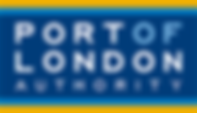
Page Title
Thames Plastic & the exploration of future dust
In September 2016, with the support of King’s College London, Thames21 and a wide network of cross-disciplinary organisations, experts and volunteers, Maria Arceo started her project to clean up plastic debris along the beaches from the tidal Thames, from Teddington up to the Sea, with the vision to show Londoners the real magnitude of plastic debris entering our rivers and ultimately our oceans. Beachcombing, handpicking, identifying, and colour-coding found objects, she eventually transforms them into a ‘building material’ that provides the viewer with a new and engaging perspective of plastic’s attributes, historicity, impact, and value.
The project aims to invite the public to this journey of exploration:
EDUCATE
It aims to provide scientific evidence and an artistic programme of participatory art events that will raise awareness and explain the issues of London’s citizens waste disposal methods and consumption habits.
ENGAGE
Inviting London’s citizens to take action and join together in various clean-up and art initiatives that show a new possible relation with, and commitment to the city’s environmental standards.
QUANTIFY
By collecting, analysing and presenting accurate scientific data on the amount of plastic waste that ends up in the River Thames and how it gets dispersed and deposited by its currents.
VISUALISE
Giving London’s citizens a real sensory perception of how much, and what type of waste is found along Thames shore while showcasing methods and initiatives to stop it getting there in the first place.
ADVOCATE
For change in the way we produce, consume, dispose and recycle plastic – aiming to make London an international example for change and civic collaboration.
CONTACT US
To find out more about the project and how you can get involved.

thames plastic & the exploration of future dust is kindly supported by
Other partners and contributors





















